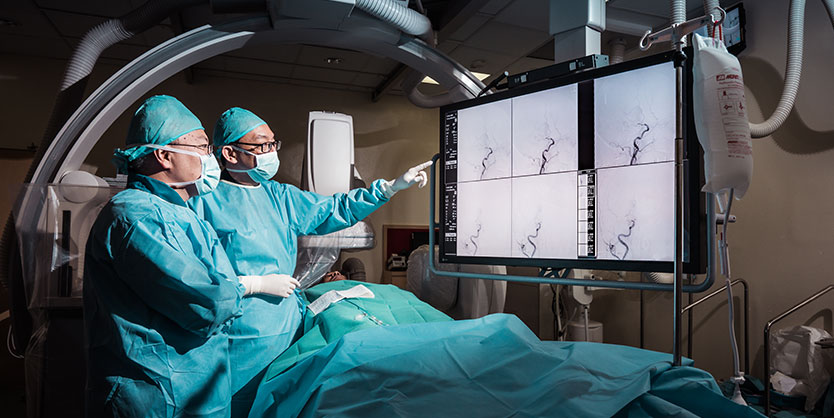
Introduction: Interventional radiology (IR) plays an increasingly important role in the treatment of cancer. By utilizing advanced imaging techniques, interventional radiologists can deliver targeted treatments directly to tumors, minimizing damage to surrounding healthy tissue. In this blog, we’ll explore the various ways interventional radiology can be used in cancer care.
Common IR Procedures Used in Cancer Treatment:
- Tumor Ablation: Tumor ablation uses heat (radiofrequency), cold (cryoablation), or microwave energy to destroy tumors. This can be particularly effective for small tumors in organs such as the liver, kidney, or lung.
- Embolization: In cases of liver cancer, an interventional radiologist may perform embolization to block the blood supply to the tumor, depriving it of the nutrients it needs to grow.
- Brachytherapy: This technique involves placing radioactive seeds directly into or near the tumor to provide a high dose of radiation to the cancer cells while minimizing exposure to healthy tissues.
- Drainage and Stent Placement: In some cancer patients, tumors can block ducts or blood vessels. Interventional radiologists can use stents to open these blocked passages, improving the patient’s comfort and quality of life.
Benefits of IR in Cancer Care:
- Minimally Invasive: Most procedures require only small incisions, reducing recovery time and the risk of infection.
- Targeted Treatment: Imaging-guided procedures allow precise delivery of treatments to tumors, improving efficacy.
- Improved Quality of Life: Many IR procedures help manage symptoms, such as pain or obstruction, leading to a better overall experience for cancer patients.
Conclusion: Interventional radiology is a powerful tool in the fight against cancer. With its ability to provide targeted, minimally invasive treatments, it is transforming cancer care and offering patients better outcomes with fewer side effects.





